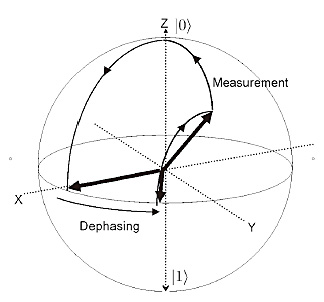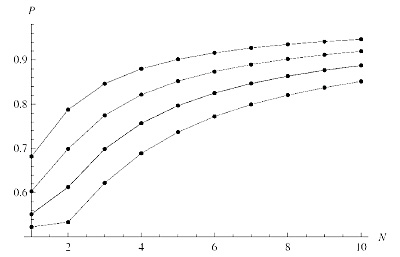Physical Science Laboratory
Quantum Zeno effect (QZE) is one of fascinating phenomena which quantum
mechanics predict. A sequence of projective measurements to an unstable
system can suppress the decay process of the state [1]. This phenomenon
will be observed if the time interval of projective measurements is sufficiently
small and the decay behavior in the time interval is quadratic.
The difficulty for the experimental demonstration of QZE is to observe
such quadratic decay behavior experimentally. The time region to show such
quadratic behavior is comparable with the correlation time of the noise,
which is usually much shorter than typical time resolution of a measurement
apparatus in the current technology. After showing the quadratic decay,
unstable system shows an exponential decay and QZE does not occur through
projective measurements to a system which decays exponentially. Due to
such difficulty, there was only one experimental demonstration to suppress
the decay process of an unstable state by projective measurements [2].
We suggest a way to demonstrate QZE experimentally with a superconducting qubit [3] (see Fig. 1). For a superconducting qubit, the quadratic decay can be observed in an experiment due to 1/f noise whose correlation time is infinite unlike the other typical noise sources where f denotes a frequency. Although a relaxation process causes an exponential decay to the superconducting qubit, by solving a master equation, we have found that one can still increase the success probability to project the state into a target subspace through frequent selective measurements as long as the relaxation time is sufficiently longer than the dephasing time (see Fig. 2). Also, we have shown that, with experimentally realizable parameters, it is possible to observe the suppression of the dephasing caused by 1/f noise by nonselective measurements. Although these results are theoretical, they have been obtained with practical experimental conditions and therefore there will soon be experimental demonstration.
[1] B. Misra et al., J. Math. Phys. 18 (1997) 756.
[2] M. C. Fischer et al., Phys. Rev. Lett. 87 (2001) 040402.
[3] Y. Matsuzaki et al., Phys. Rev. B. 82 (2010) 180518.
 |
 |
|||||
|
|